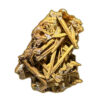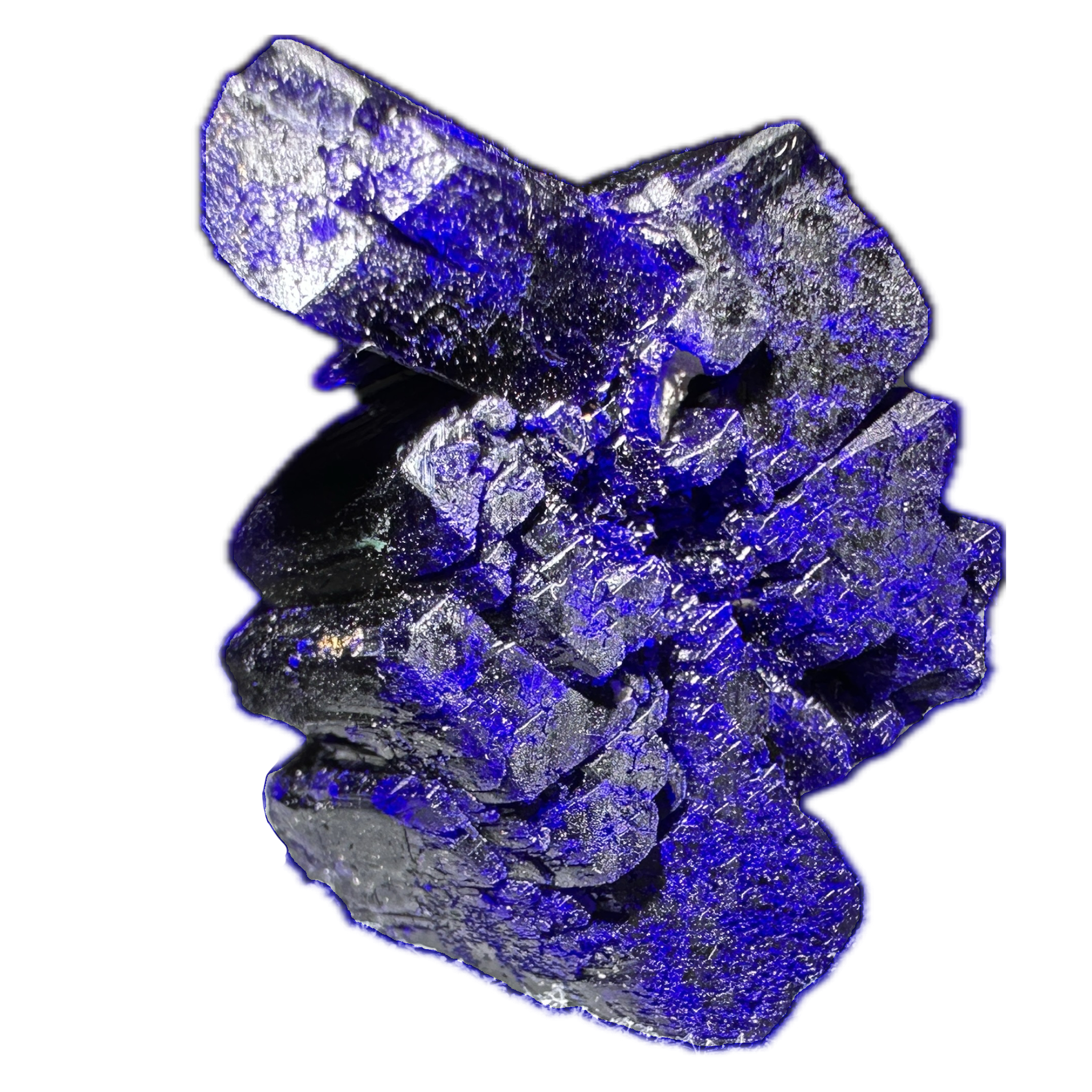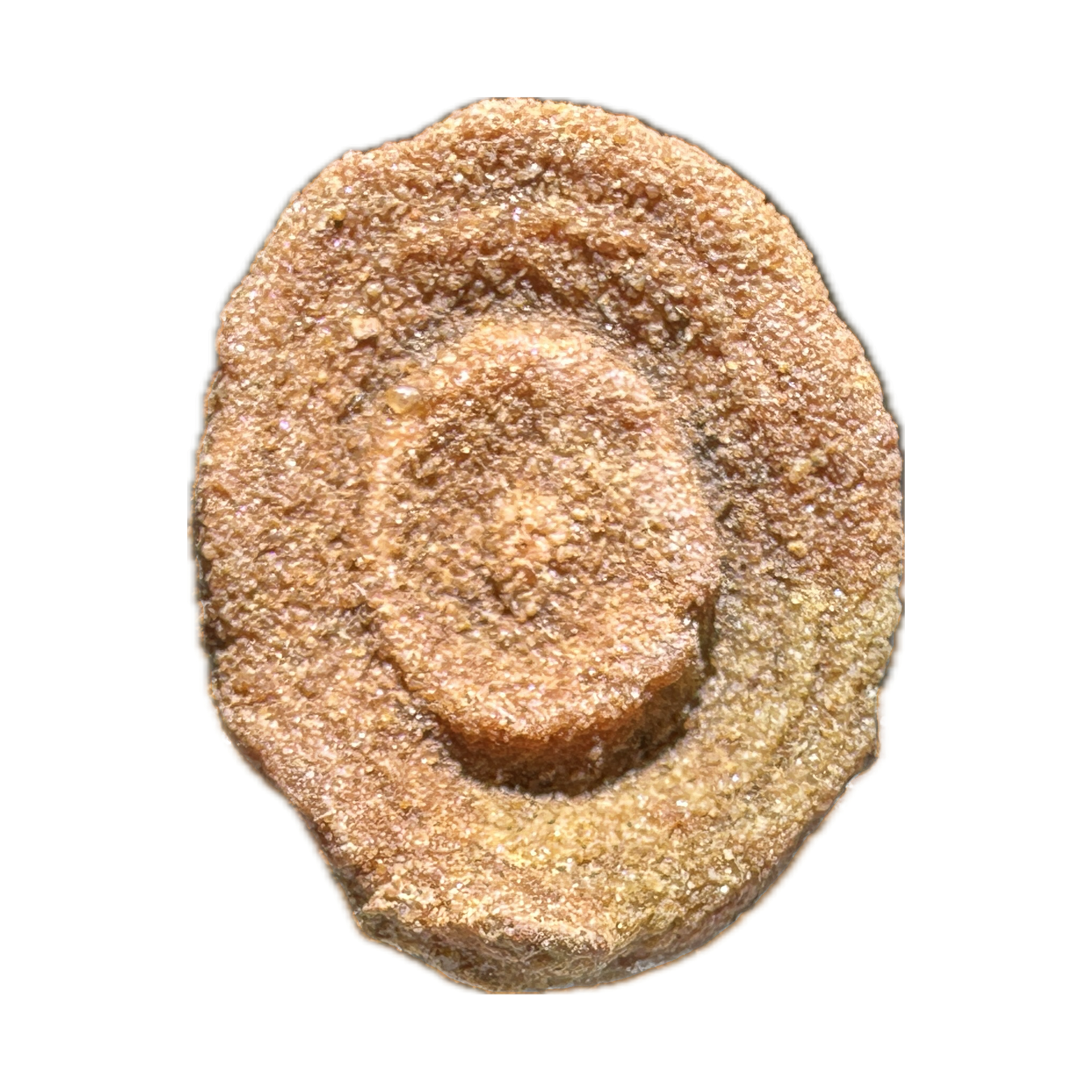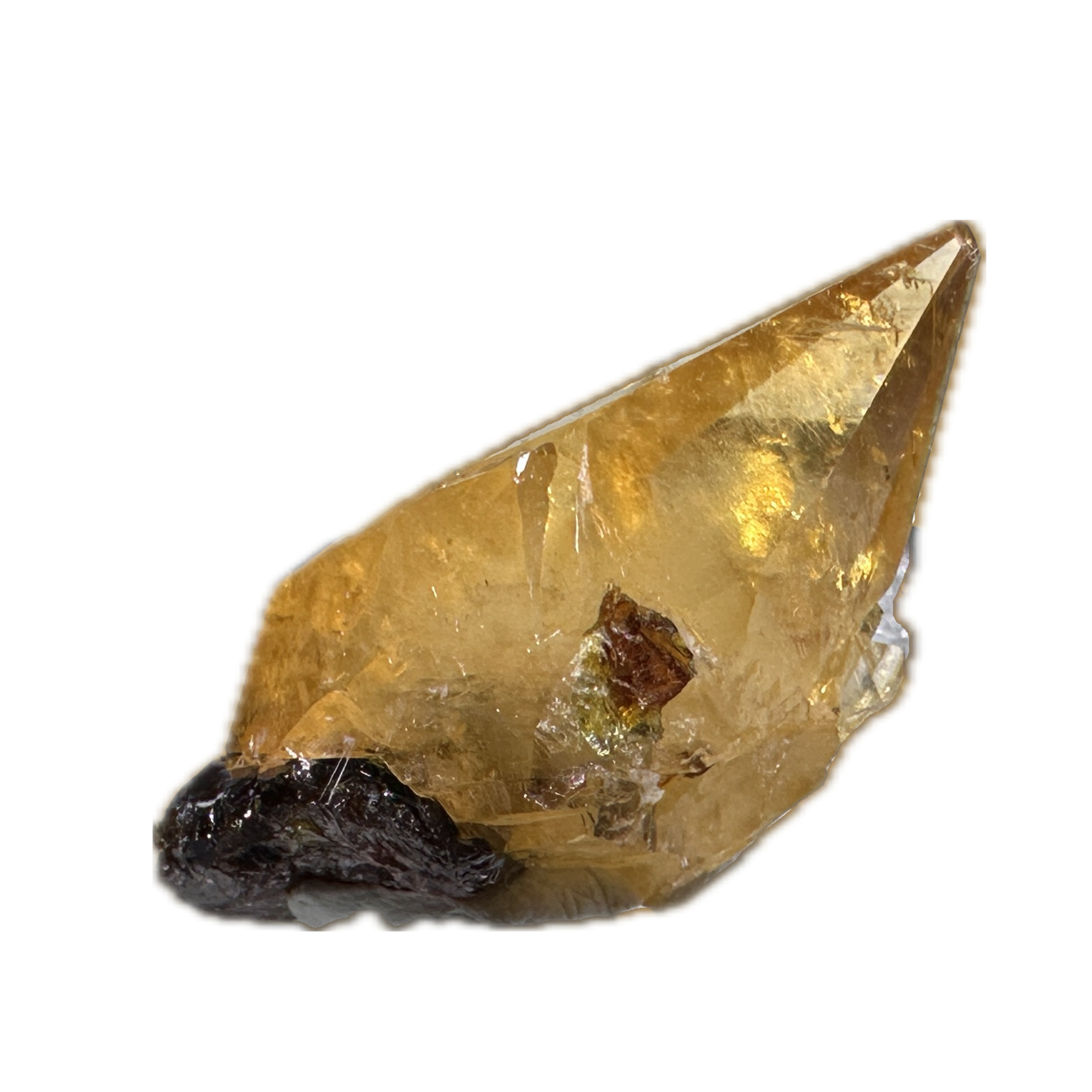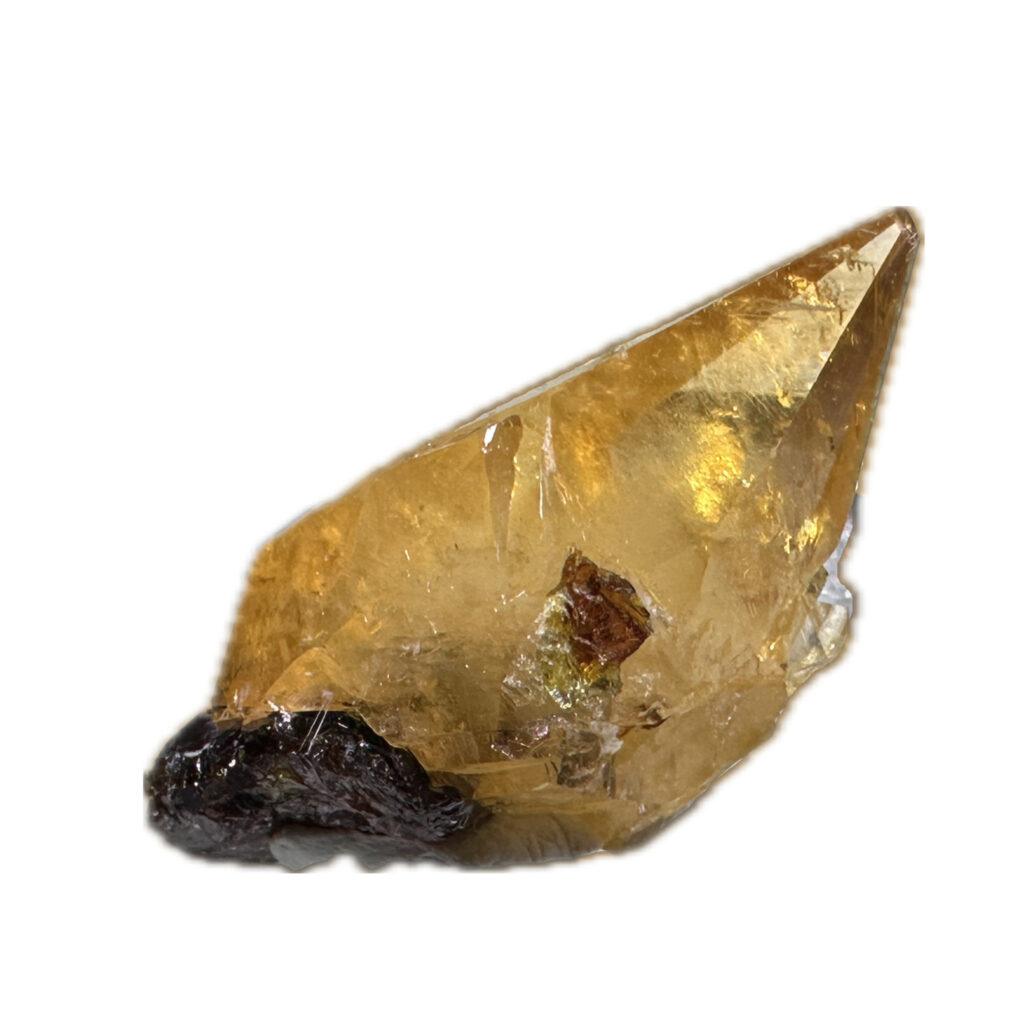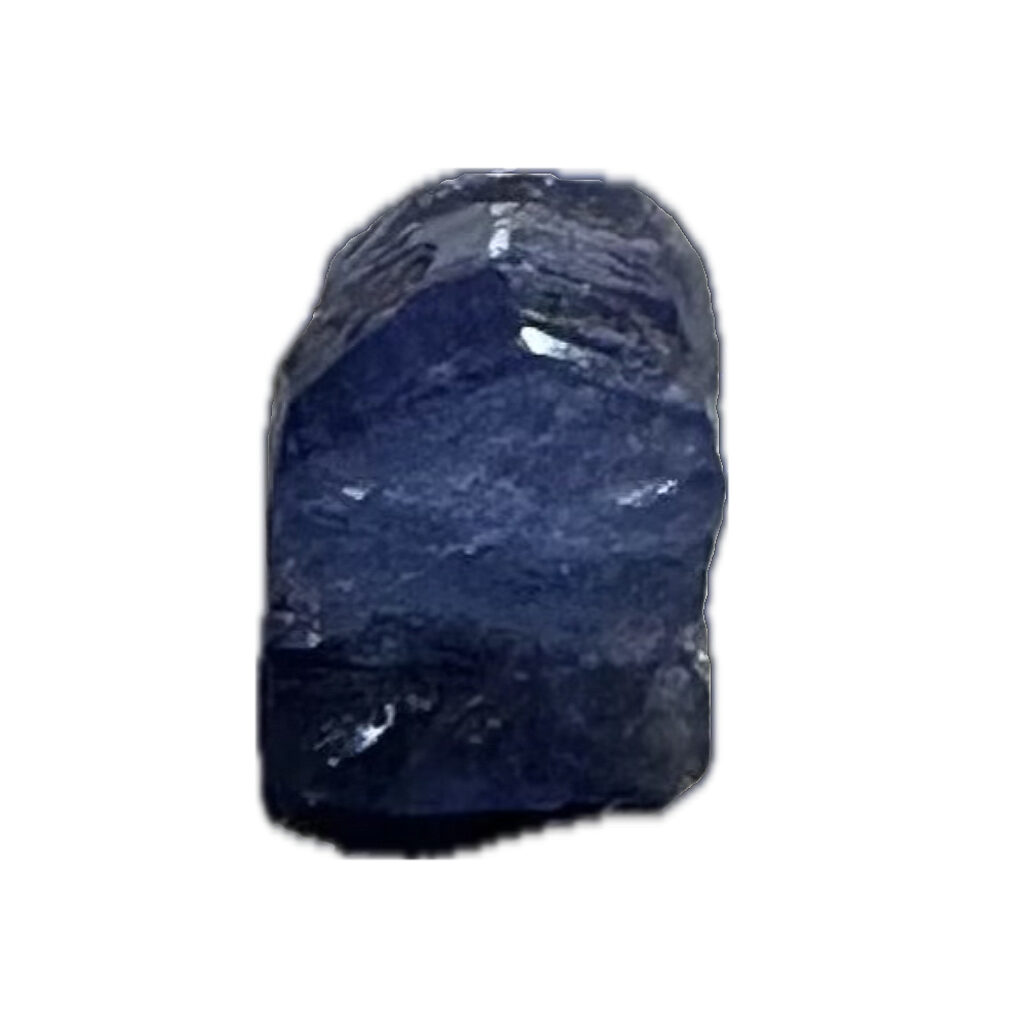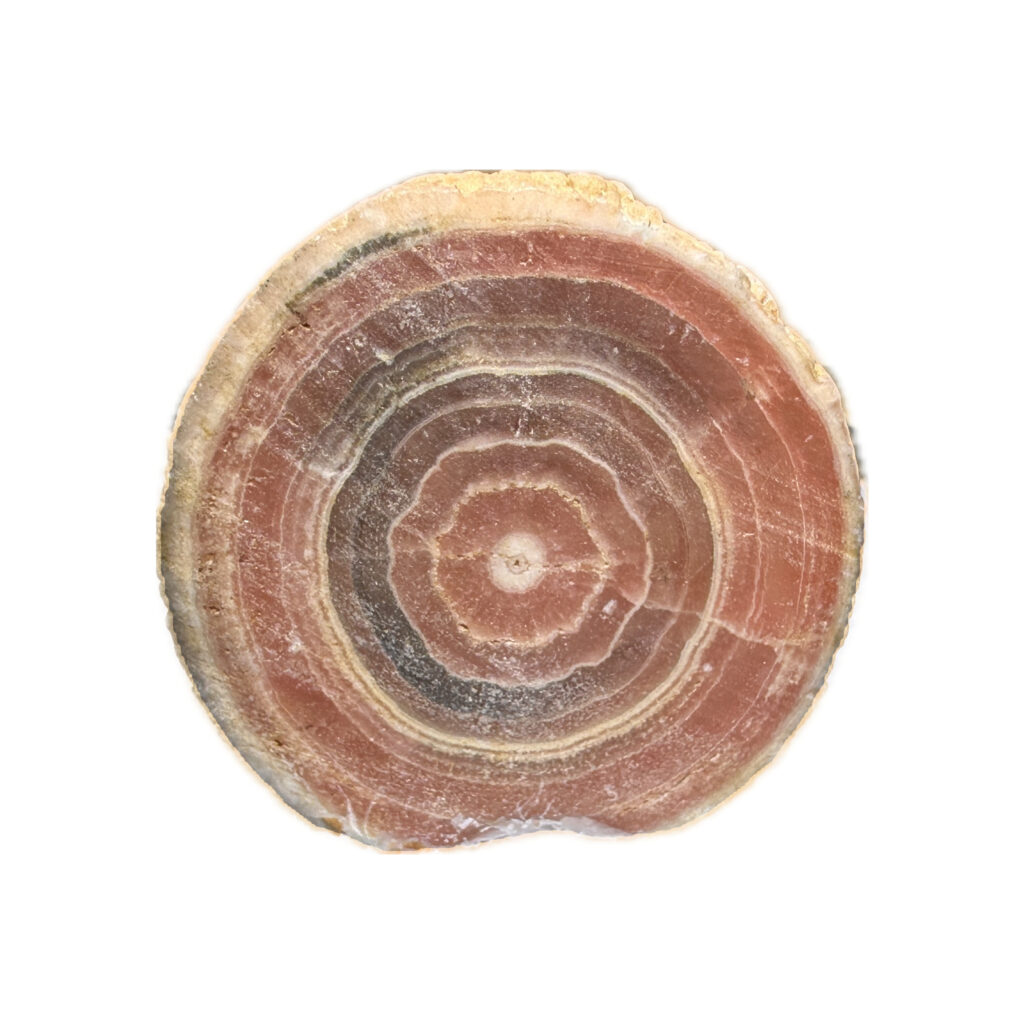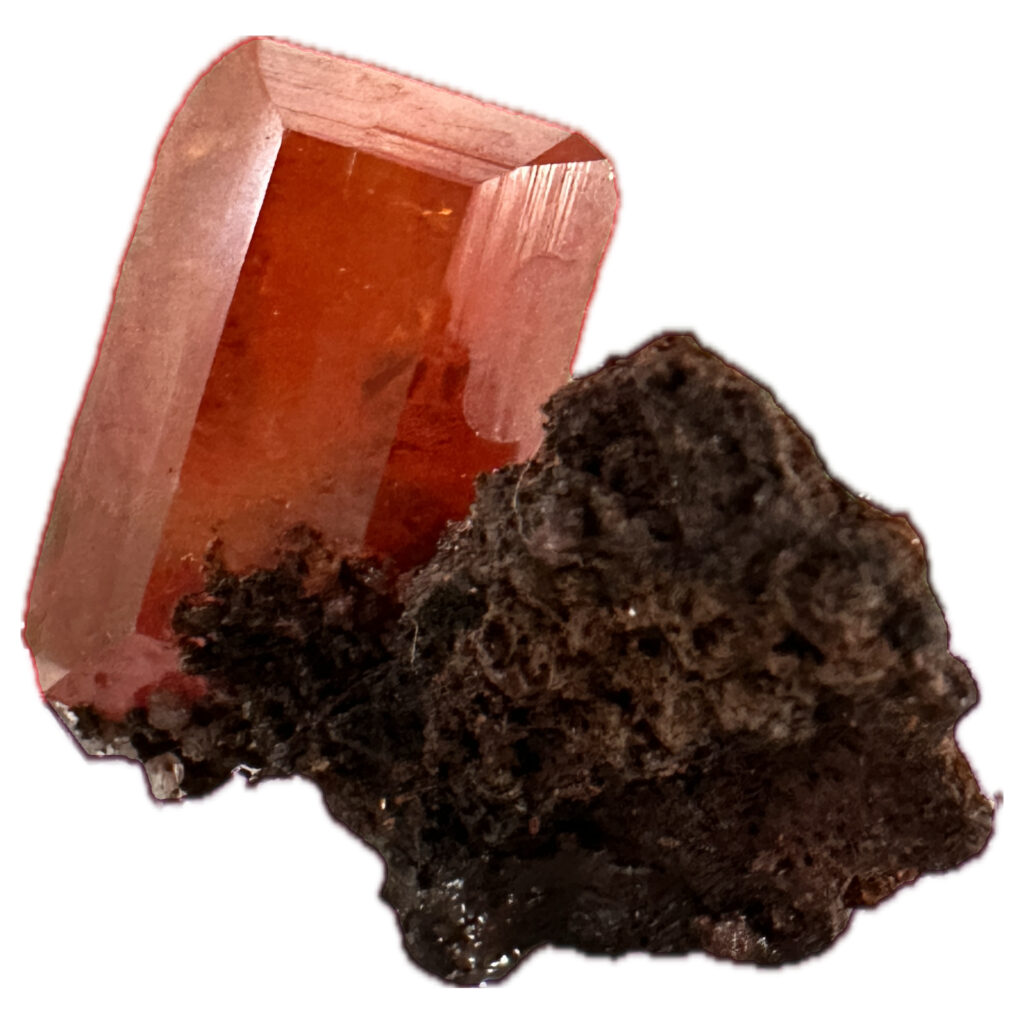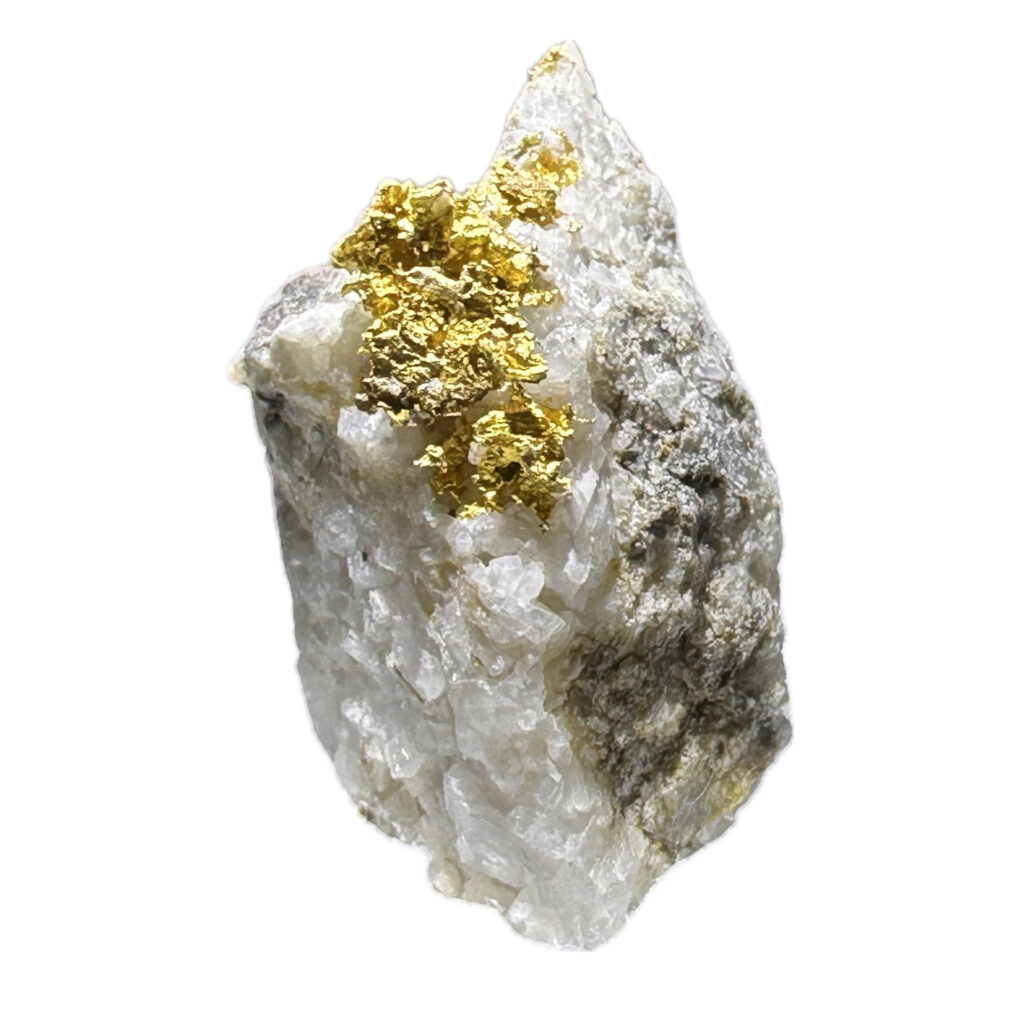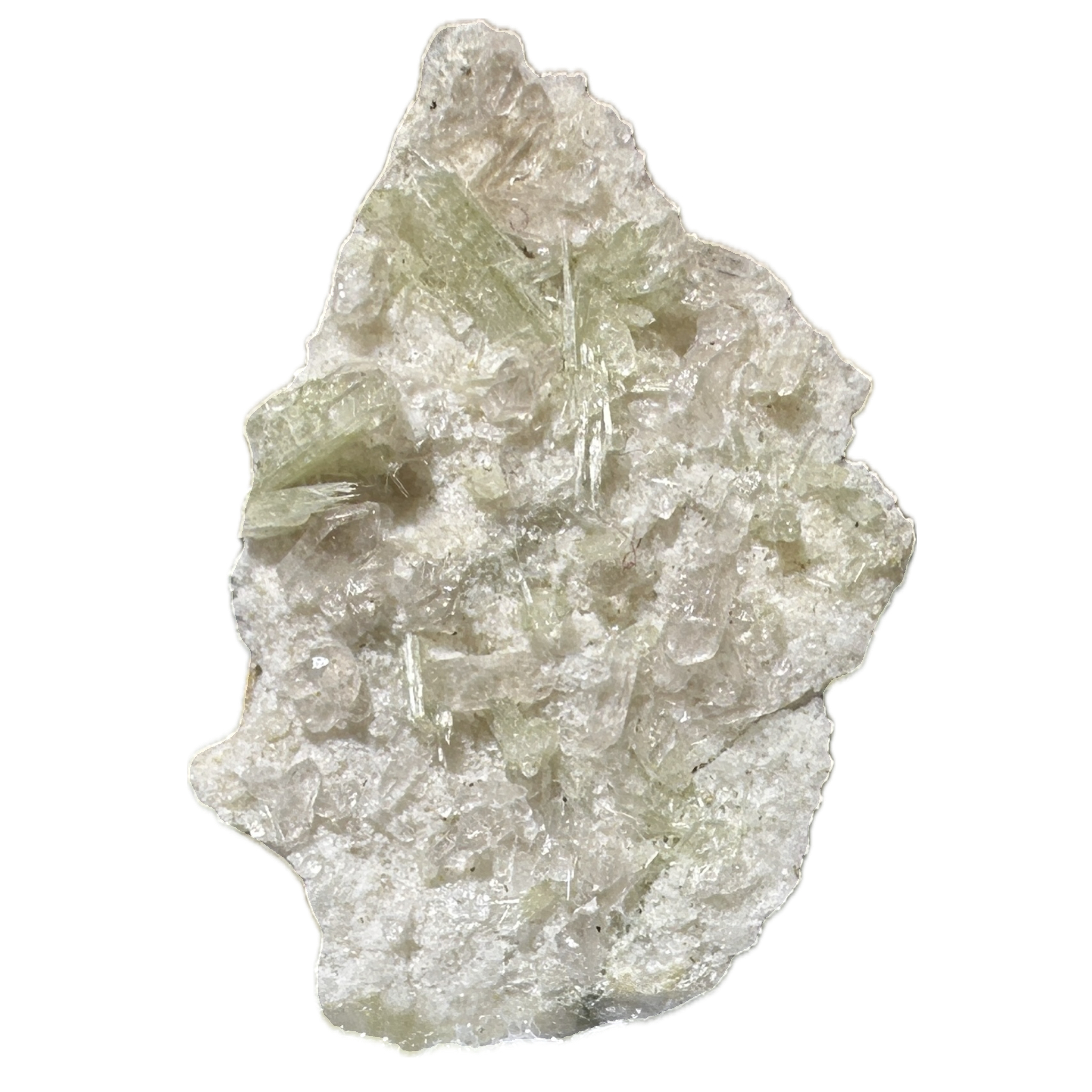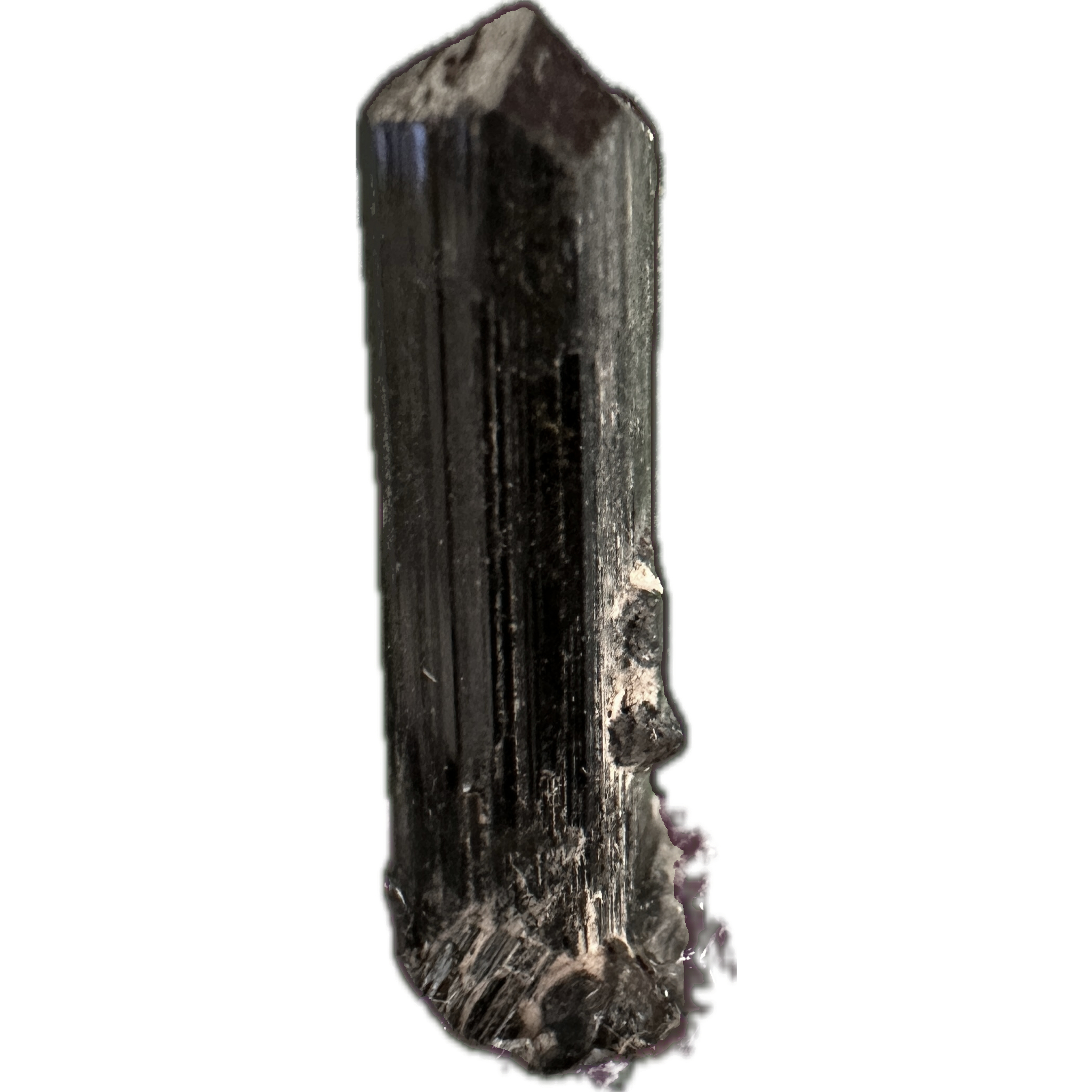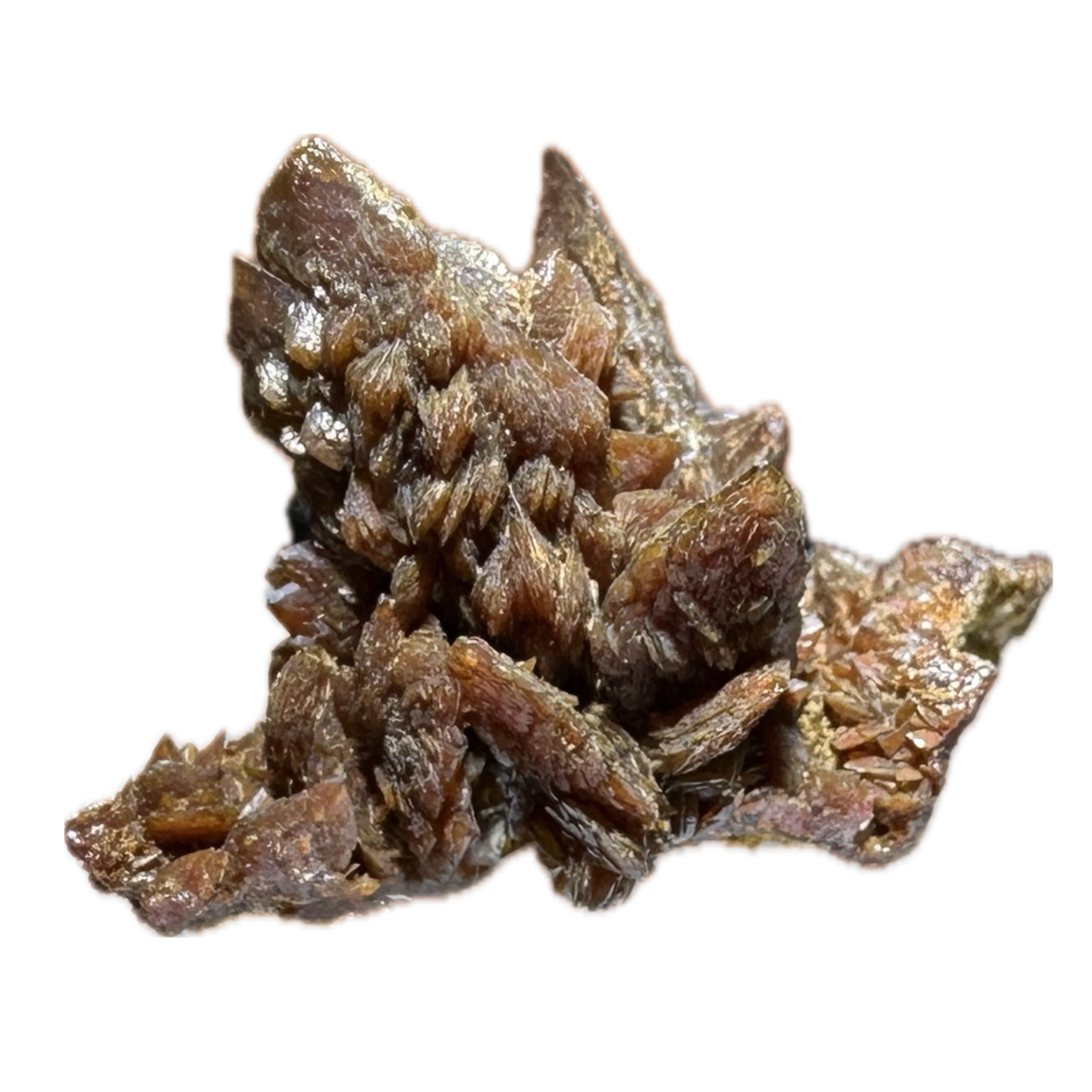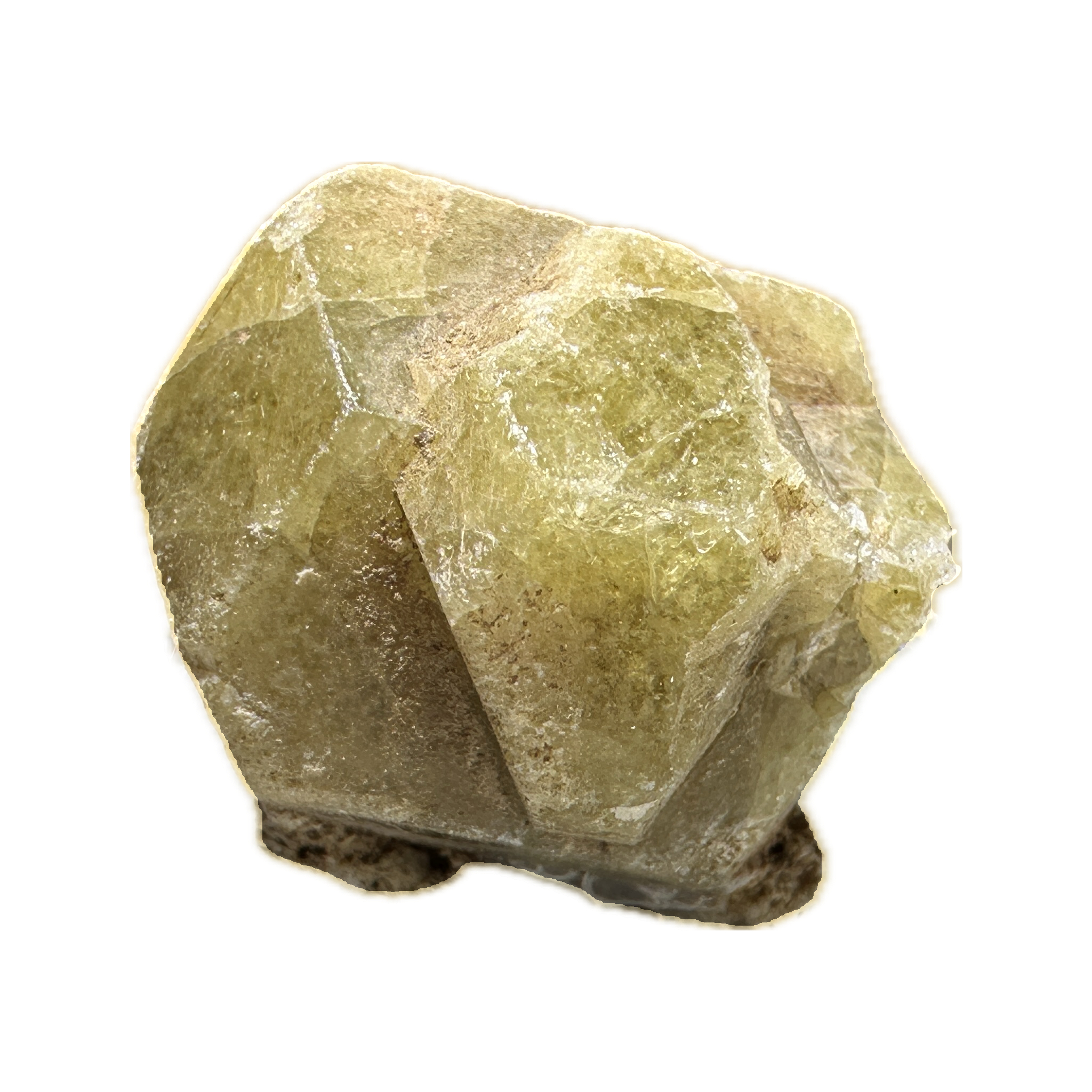Stibiconite thumbnail mineral, Mexico
Stibiconite is a rare mineral that forms as an oxidation product of antimony sulfide minerals. It is a secondary mineral that results from the weathering of primary antimony ores. The chemical composition of stibiconite is not well-defined, as it can vary due to its secondary nature, but it is often considered a basic antimony oxide hydroxide. The mineral typically occurs in earthy to powdery masses or as botryoidal aggregates.
Thumbnail specimens of stibiconite are small-sized samples that showcase the unique characteristics of this mineral. These specimens, measuring just a few centimeters in size, are prized by mineral collectors for their rarity and the interesting formations they exhibit. Stibiconite can display various shades of green, yellow, or brown, and its earthy texture adds to its distinctive appearance.
Stibiconite is commonly associated with other antimony minerals such as stibnite and valentinite. Its formation is often linked to the oxidation of antimony-bearing sulfide deposits in the presence of water and air. While not a significant ore of antimony, stibiconite’s occurrence provides insights into the geological processes involved in the weathering and alteration of antimony-rich rocks.
Due to its scarcity and the unique characteristics of stibiconite, collectors appreciate thumbnail specimens as additions to their mineral collections. The small size allows for convenient display, and enthusiasts value them not only for their aesthetic appeal but also for the geological processes they represent. As with handling any mineral specimen, care should be taken to avoid crumbling or damaging the delicate structures of stibiconite thumbnails.
Thumbnail specimens hold a unique allure in the world of mineral and gemstone collecting, captivating enthusiasts and collectors alike with their petite yet captivating presence. Measuring no more than an inch or so in size, these diminutive wonders possess a distinct charm that sets them apart in the eyes of collectors. To understand why collectors prize thumbnail specimens, we must delve into the fascinating world of mineral collecting, exploring the characteristics and significance that make these tiny treasures so coveted.
Mineral collecting is a hobby as old as civilization itself, with evidence of early human fascination with minerals dating back thousands of years. From ancient civilizations using minerals for ornamental purposes to modern-day collectors meticulously assembling vast collections, the allure of minerals transcends time and culture. Within this vast and diverse hobby, collectors pursue specimens ranging from massive geological formations to minute crystals barely visible to the naked eye. It is within this realm of minuscule marvels that thumbnail specimens carve out their niche, capturing the imagination of collectors with their compact size and exquisite beauty.
At the heart of the appeal of thumbnail specimens lies their diminutive dimensions. Measuring no more than one inch in size, these tiny treasures pack a remarkable amount of geological splendor into a compact package. Despite their small stature, thumbnail specimens often exhibit intricate crystal formations, vibrant colors, and mesmerizing patterns that rival their larger counterparts. Their petite size allows collectors to appreciate the finer details of mineralogy up close, providing a window into the fascinating world of crystallography and mineral formation.
One of the defining characteristics of thumbnail specimens is their rarity. Unlike larger specimens that may be more readily accessible, thumbnail specimens are often limited in quantity and can be challenging to acquire. Their small size makes them easy to overlook in the field, requiring careful searching and meticulous extraction techniques to uncover. As a result, collectors prize thumbnail specimens for their scarcity, viewing them as prized additions to their collections that showcase the beauty and diversity of the mineral kingdom in miniature form.
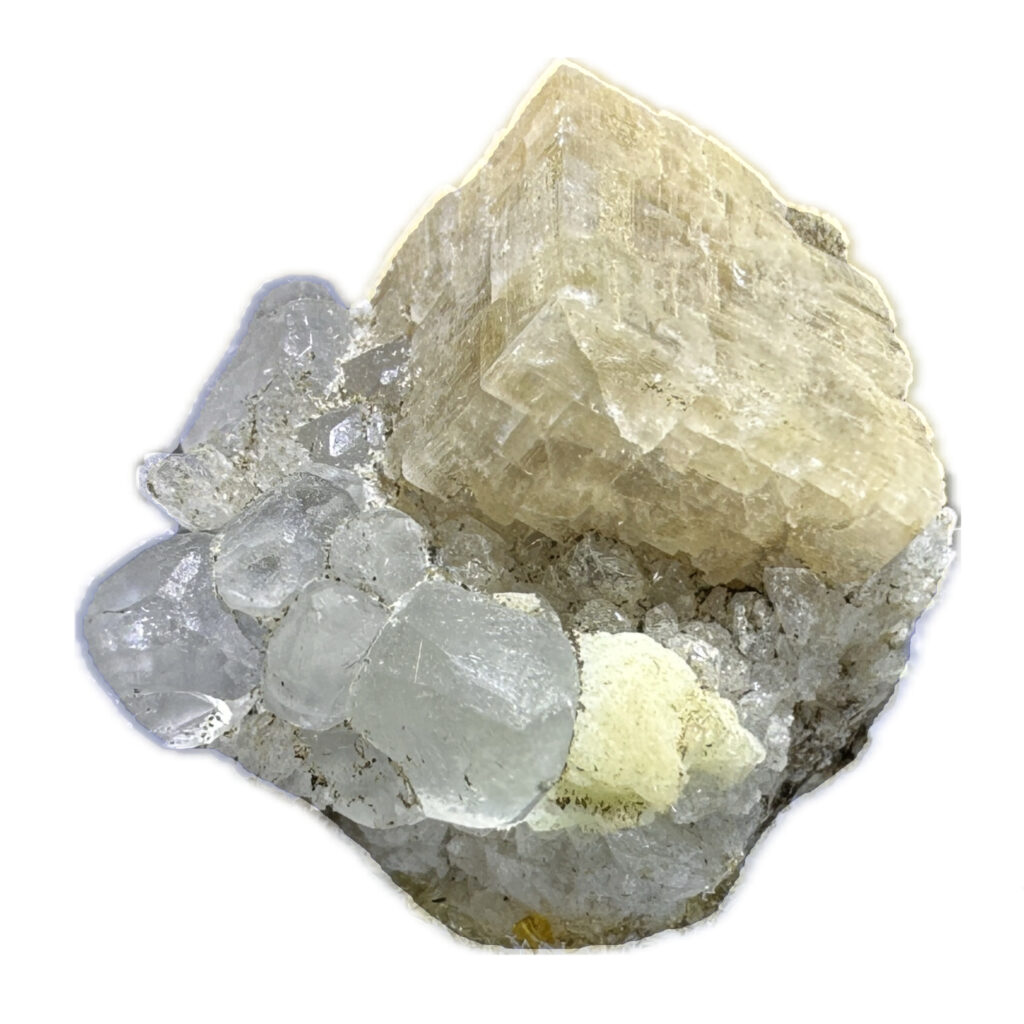
Thumbnail specimens also hold significant scientific value, offering insights into geological processes and mineral formation. Despite their small size, these specimens provide valuable information about the conditions under which they formed, including temperature, pressure, and chemical composition. By studying thumbnail specimens, scientists can gain a better understanding of Earth’s geological history and the forces that shape our planet. As such, collectors play a crucial role in preserving these specimens for future study, ensuring that valuable geological data is not lost to time.
In addition to their scientific significance, thumbnail specimens hold aesthetic appeal for collectors, who are drawn to their exquisite beauty and intricate detail. Despite their diminutive size, these specimens often display vibrant colors, lustrous surfaces, and geometrically precise crystal formations that captivate the eye. Whether it’s the iridescent hues of a tiny opal, the delicate symmetry of a miniature quartz cluster, or the fiery brilliance of a diminutive garnet, thumbnail specimens showcase the extraordinary diversity of the mineral kingdom in all its splendor.
Collectors are also drawn to thumbnail specimens for their versatility and portability. Unlike larger specimens, which may require specialized display cases or storage solutions, thumbnail specimens can be easily housed in small containers or display cases, making them ideal for collectors with limited space. Their compact size also makes them ideal for travel, allowing collectors to take their prized specimens with them wherever they go and share their passion for minerals with others.
Furthermore, thumbnail specimens often serve as valuable educational tools, providing enthusiasts and novices alike with an opportunity to learn about mineralogy and geology. Their small size and accessibility make them ideal for hands-on exploration, allowing collectors to study mineral properties, crystal structures, and geological formations up close. Many collectors also use thumbnail specimens to educate others about the beauty and diversity of the mineral kingdom, sharing their passion through outreach events, educational programs, and online forums.
Prehistoric 101 (Learn about fossils, minerals, and meteorites)
What is a Mineral?
Discovering Prehistoric Life and Fossils




